1912 – 1935
By the turn of the centuries 1800-1900, the French had not marked themselves as part of the top clientele when it came to luxurious ocean liners. The race for the best transatlantic ships was between Britain and Germany. The Americans had left the scene in the late 1800s. By 1900, the largest ship in the world was the British White Star Line’s Oceanic at 17,000 tons – if you do not count the scrapped 19,000-tonner Great Eastern from 1860. The keeper of the desirable Blue Riband was the German H.A.P.A.G.’s Deutschland with an average Atlantic crossing time of around 23 knots.
The French did not emigrate to the Americas on a large scale as many other European countries did, and did therefore not need great emigrant-transports. However, it brought with itself a certain dignity of having a luxurious ocean liner. In 1908, an order was given to Chant. et Atel. de St Nazaire in Penhoët. This was supposed to be the prime C.G.T.-ship, and the company intended on naming her France. However, it was brought to light that it already existed four other French vessels bearing the name France. The intended name was changed to Picardie.
The new ship was to have a tonnage of above 20,000 tons – the largest yet operated by the French Line. Yet, this was no match for the Cunard Line’s two giant Lusitania and Mauretania at circa 31,000 tons each. And in Northern Ireland the White Star Line were constructing two vessels with a gross tonnage above 45,000 tons. The French Line’s new vessel was not to be in any way extreme in size, but C.G.T. planned for other notable features concerning their new flagship.
In February 1909, the keel of the steamer was laid. Still the ship’s name was Picardie, but one and half years later the first France from 1865 was scrapped, and that gave the French Line opportunity to reconsider the still-building flagship’s name. Very shortly the ship was decided to be named France. On September 20, 1910, the France was launched. The newspaper-reporters could not get enough of the ship; she was the largest French vessel, and the country’s first turbine. The astonishing thing about the France’s engines was that the number of horsepower almost doubled the number of tons. The ship had a tonnage of 24,000, and 42,000 horsepower. In comparison, the 45,000-tonner Olympic from 1911 had 46,000 horsepower. This combination of tonnage/horsepower made the France the fastest liner afloat, except for the Lusitania and the Mauretania. In the summer of 1912, the France was completed, and ready for her trials, during these she managed to maintain a good 25 knots. On August 12, she arrived at Le Havre, and eight days later, she set out on her maiden voyage. It was not a record-breaking one, but the passengers were thrilled by something else. The ship’s interior was so astonishing that its like had never been seen on the seas before. The pattern for the beautiful inside had been Louis XIV’s palace at Versailles. The ship soon became known as the ‘Chateau of the Atlantic’. Maritime historian John Maxtone-Graham comments: ‘I doubt that any craft since Cleopatra’s fabled barge knew such visual extravagance’.
The France featured one common problem, though – vibrations. In order to get rid of these, the ship was sent to the shipbuilding company Harland & Wolff at Southampton in 1913. There both the irritating vibration and an annoying rolling the ship developed in high seas was to be removed. After the overhaul, the France sported longer and wider bilge keels and two new propellers. With the reduced rolling the ship became even faster, but not fast enough to beat the Mauretania’s transatlantic record.
In August 1914, when World War I was very obvious for most people, the France was called in for French military duties and renamed France IV. At first she was turned into an auxiliary cruiser, but soon it became evident that she was not suited for her new task; she devoured too much fuel. Instead she was rebuilt as a troop-transport. Just as all other country’s ships, she performed brilliantly in her new role. Between February and April 1915, the France was employed in the Dardanelles campaign.
However, the need for hospital ships became greater as the devastating war kept on. In 1916, the France was converted into a hospital ship. She continued in her new white and red livery until April 1917, when the United States entered the war. The France’s new task was to transport troops between the Americas and her home country. She did her part of the Allies’ victory without mishaps, except for an explosion in the engine room in 1918 that killed nine crew members. The same year the war ended and in March 1919, the France was returned to the French Line. They immediately named their vessel back to France. The steamer was put back on the Le Havre-New York route, but continued with some military duties (shipping American soldiers home) for some time.
The French Line expanded their company in 1921 when they added the 35,000-tonner Paris to the Le Havre-New York route. Together with France, the Paris attracted passengers to the French Line. Two years later yet another novelty occurred – the France changed engines from coal burning to oil burning. As with the Olympic, she did not improve in speed after the conversion. The same year, the new American immigration restrictions made the France’s vast steerage areas surplus. The third class was decided to be decreased from 800 berths to 150. Now the ship was truly a ship for the rich and famous – if it were not for her age. In 1927, the breathtaking Île de France arrived on the scene. This made the France outdated and she was placed on the Mediterranean and the West Indies cruise services. Unfortunately, she was too expensive to operate with the low fares required, and was never a success. In 1932, the beautiful France was laid up in Le Havre. She lay there almost unattended until January 1933, when one of the night-watchmen found a fire, which he managed to contain until the fire brigade arrived. The fire had not destroyed much at all, but nevertheless, the France was an old ship and in November 1934 she was sold for scrap. On April 15, 1935 the France left Le Havre under her own steam for the scrappers at Dunkirk. There would not be a France on the seas until the arrival of a 66,000-tonner in 1962. But that is another story.
Specifications
- 713 feet (217.8 m) long
- 75 feet (23 m) wide
- 23,666 gross tons
- Steam turbines powering four propellers
- 23 knot service speed
- Passenger capacity of 2,026 people

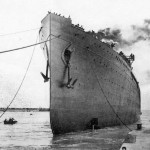
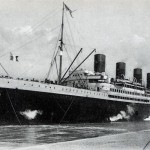
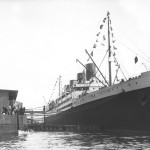
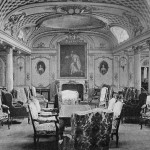

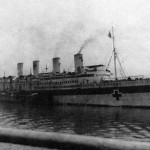
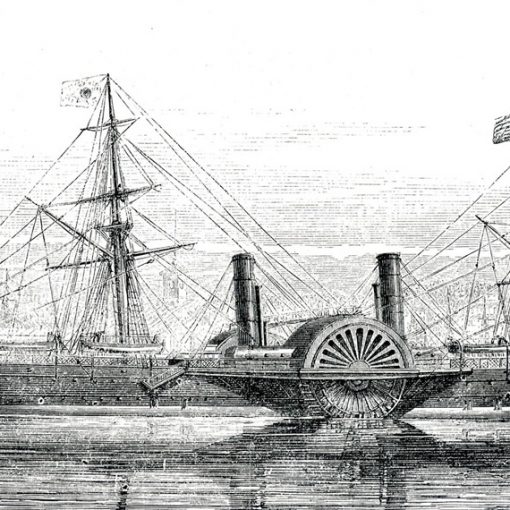
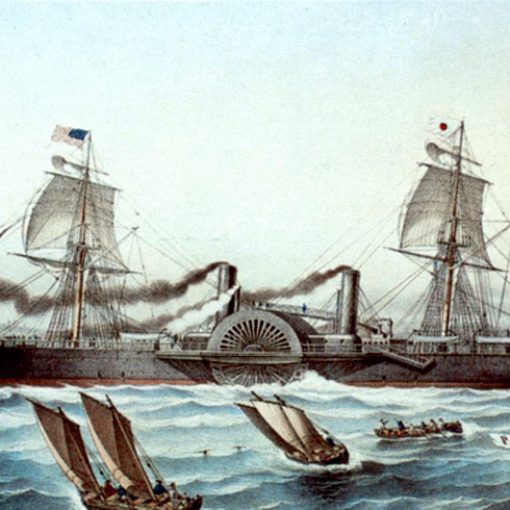
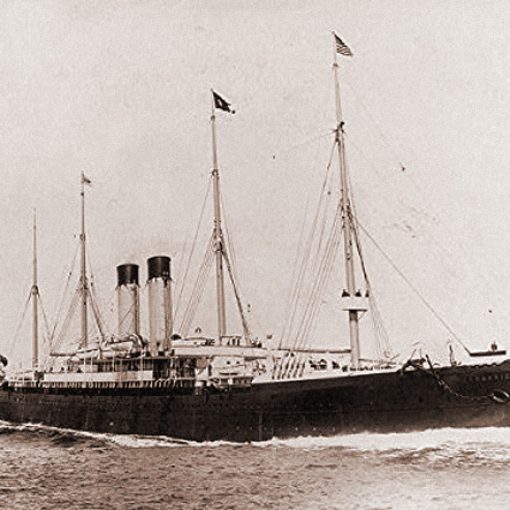
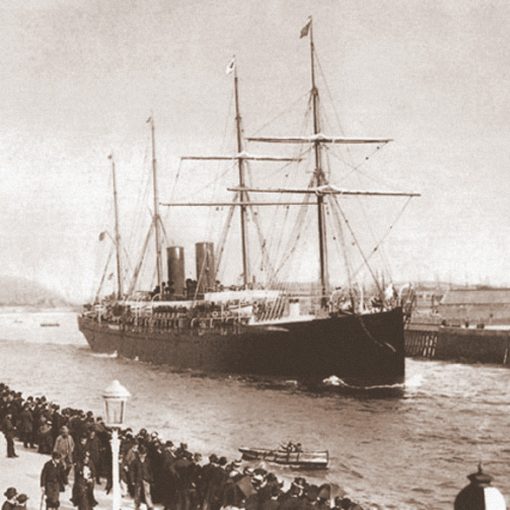
One thought on “France (II)”